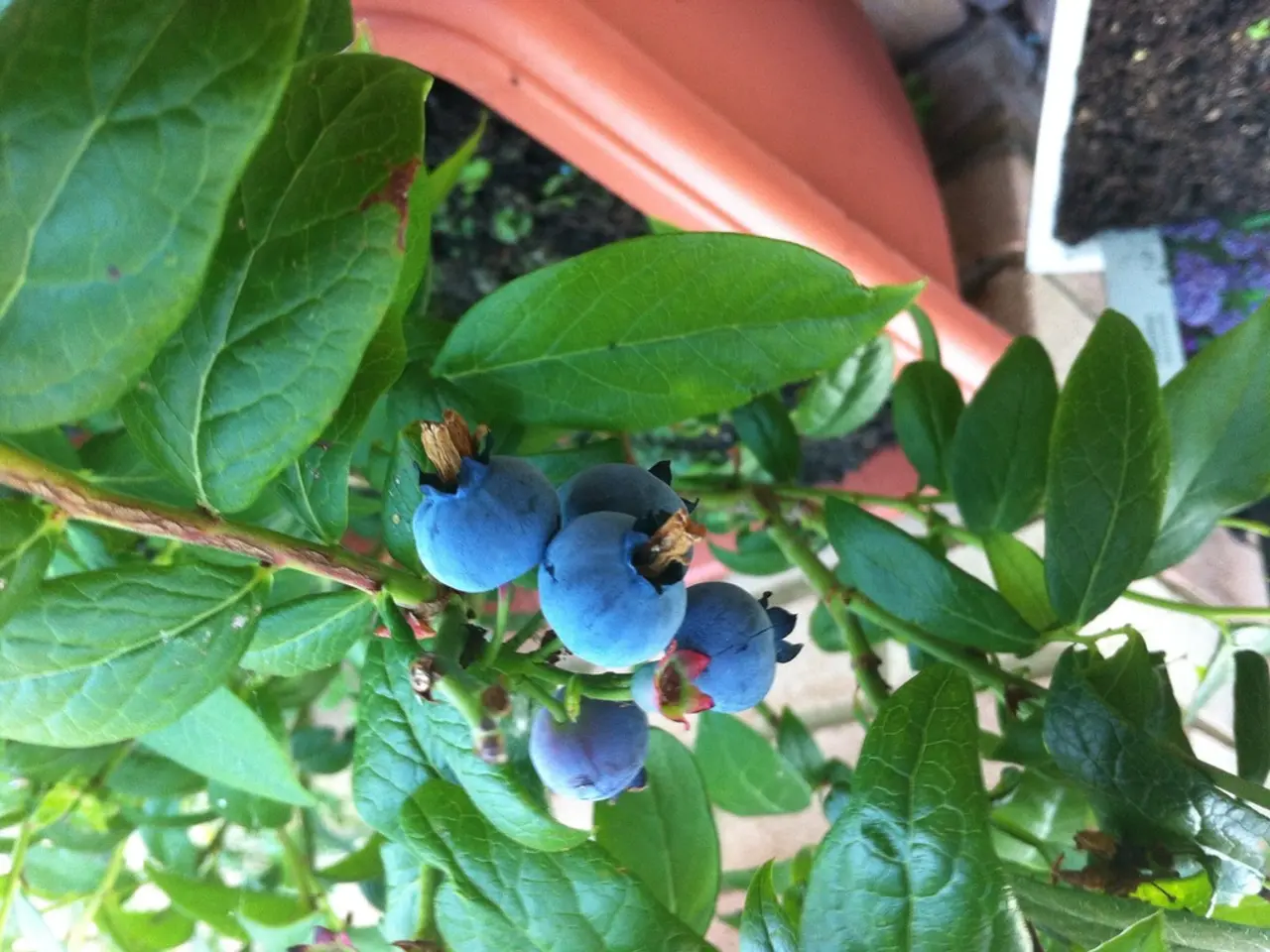Cultivating Blueberries in a Personal Backyard Garden
Cultivating Blueberries Successfully in Ohio Soil
Growing blueberries in Ohio soil can be a rewarding experience, but it requires careful attention to soil conditions and cultivation practices. Here's a guide to help you grow healthy blueberry plants in Ohio.
Soil Preparation
The key to successful blueberry cultivation in Ohio is ensuring the soil is acidic with a pH between 4.5 and 5.5. Ohio soils are often more neutral to alkaline, so soil preparation is essential. This typically involves acidifying the soil, which can be done by incorporating elemental sulfur.
To prepare the soil, first, test your soil pH to determine how much amendment is needed. Finer sulfur particles and adequate moisture speed up oxidation and acidification. Improve soil texture by adding organic matter like peat moss, pine bark, or compost, which helps create the loose, well-drained, and slightly sandy or loamy soil structure blueberries prefer.
Avoid heavy clay soil unless it is well amended with organic matter to improve drainage and aeration. Once soil pH is in the proper range, maintain it by applying acidic mulches such as pine needles or wood chips and avoid liming materials.
Harvesting and Post-Harvest Care
Blueberries should be rolled from the cluster with the thumb into the palm of the hand to avoid rubbing off the bloom and to reduce bruising that leads to decay. The easiest, most effective means of retaining blueberry quality following harvest is to use refrigeration. Low temperatures slow ripening and substantially reduce decay.
Fertilisation and Maintenance
Blueberry bushes have very shallow root systems and are very sensitive to water fluctuations. They require at least 1 to 2 inches of water per week. In the year of planting, apply 1/2 to 2/3 pound of ammonium sulfate or 10 ounces to one pound of 10 10 10 per 100 feet of row, four weeks after planting. In the second year and succeeding years, apply 1 to 1.5 pounds of ammonium sulfate or 2 to 3 pounds of 10 10 10 per 100 feet of row each year for fertility and acidity maintenance.
Pests and Diseases
Blueberry plants require very acidic soil conditions to grow and thrive. However, they can be susceptible to diseases such as anthracnose, gray mold, and Alternaria. Decay is more of a problem with fruit harvested late in the season when a large percentage of fruit are overripe. Birds can also be a problem, so netting the bushes may be necessary to prevent losses.
Additional Tips
Blueberries are a good fruit crop for home gardens, requiring little space and minimal spray requirements. Maintain a moist soil into the late summer after harvest, as flower buds for next year form in late August and September. Generous use of mulches such as sawdust, wood chips, or peat moss will help control weeds, conserve moisture, and keep roots cool. Increased organic matter from decomposing mulch will help improve the soil structure and nutrient uptake for the blueberry bush.
For more information about growing blueberries, growers should purchase a copy of the OSU Extension Bulletin 940 "Midwest Home Fruit Production Guide" and Bulletin 780 "Controlling Diseases and Insects in Home Fruit Plantings" from OSU Extension offices across the State of Ohio.
References:
- Blueberries. (n.d.). Ohio State University Extension. Retrieved from https://ohioline.osu.edu/factsheet/hyg-1826
- Blueberries. (n.d.). University of Illinois Extension. Retrieved from https://web.extension.illinois.edu/cfivt/blueberries/
- Blueberries. (n.d.). University of Missouri Extension. Retrieved from https://extension.missouri.edu/publications/g6560
The authors would like to thank Dr. John Strang, Professor and Extension Fruit and Vegetable Specialist with University of Kentucky for reviewing this fact sheet, and the use of blueberry harvest and storage information. Our sincere appreciation goes to Mr. Mark Longstroth, Area Extension Educator, Michigan State University, for reviewing this fact sheet and use of a photo, and Dr. Bruce Bordelon, Professor Horticulture and Landscape Architecture, Purdue University for reviewing this fact sheet.
- To maximize blueberry growth and yield in Ohio, consider implementing pest management strategies to protect against diseases such as anthracnose, gray mold, and Alternaria, which can affect blueberry plants.
- Horticulture enthusiasts in Ohio, looking to incorporate blueberries into their lifestyle and home-and-garden setup, may find beneficial information in OSU Extension Bulletins like the "Midwest Home Fruit Production Guide" and "Controlling Diseases and Insects in Home Fruit Plantings."
- In addition to soil preparation and cultivation techniques specific to blueberries, gardening enthusiasts should also focus on creating horticultural habits conducive to optimal growth, such as using a mulch layer to regulate moisture and improve soil structure.




